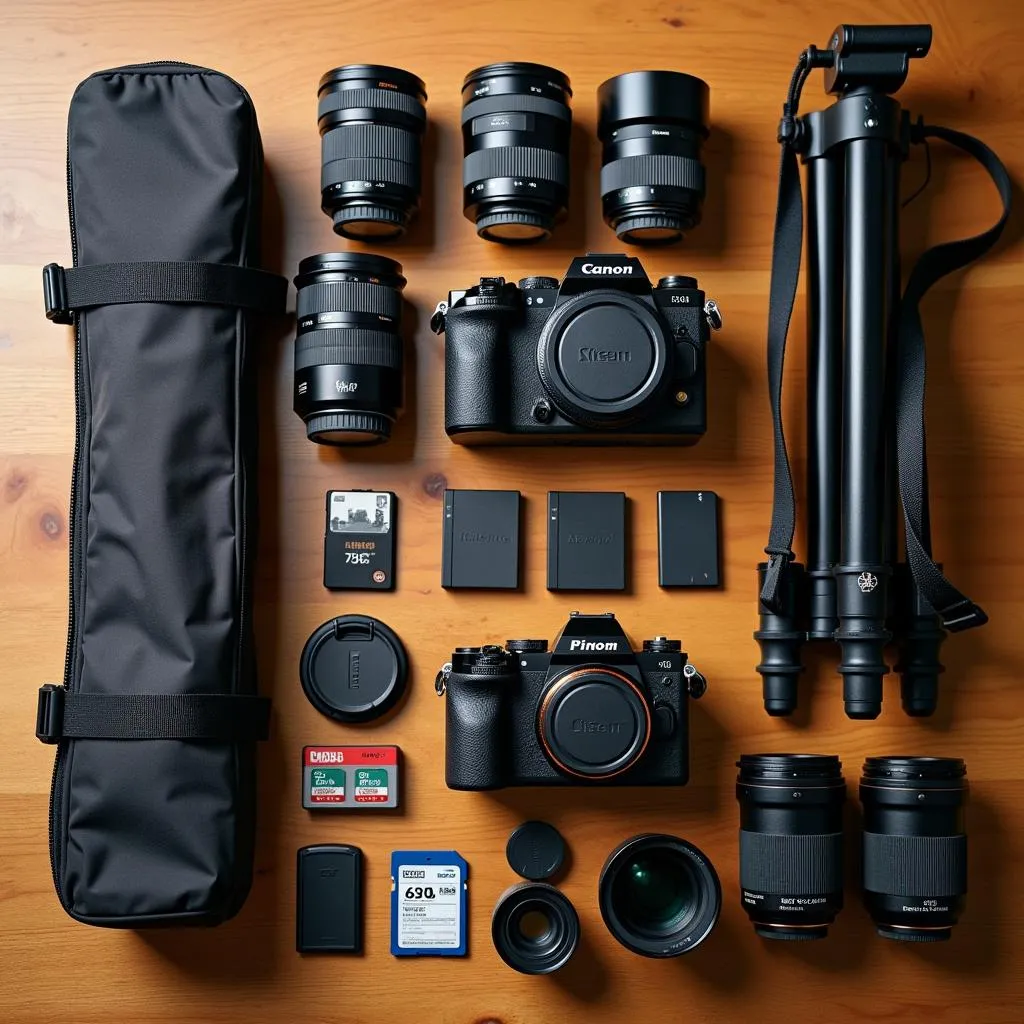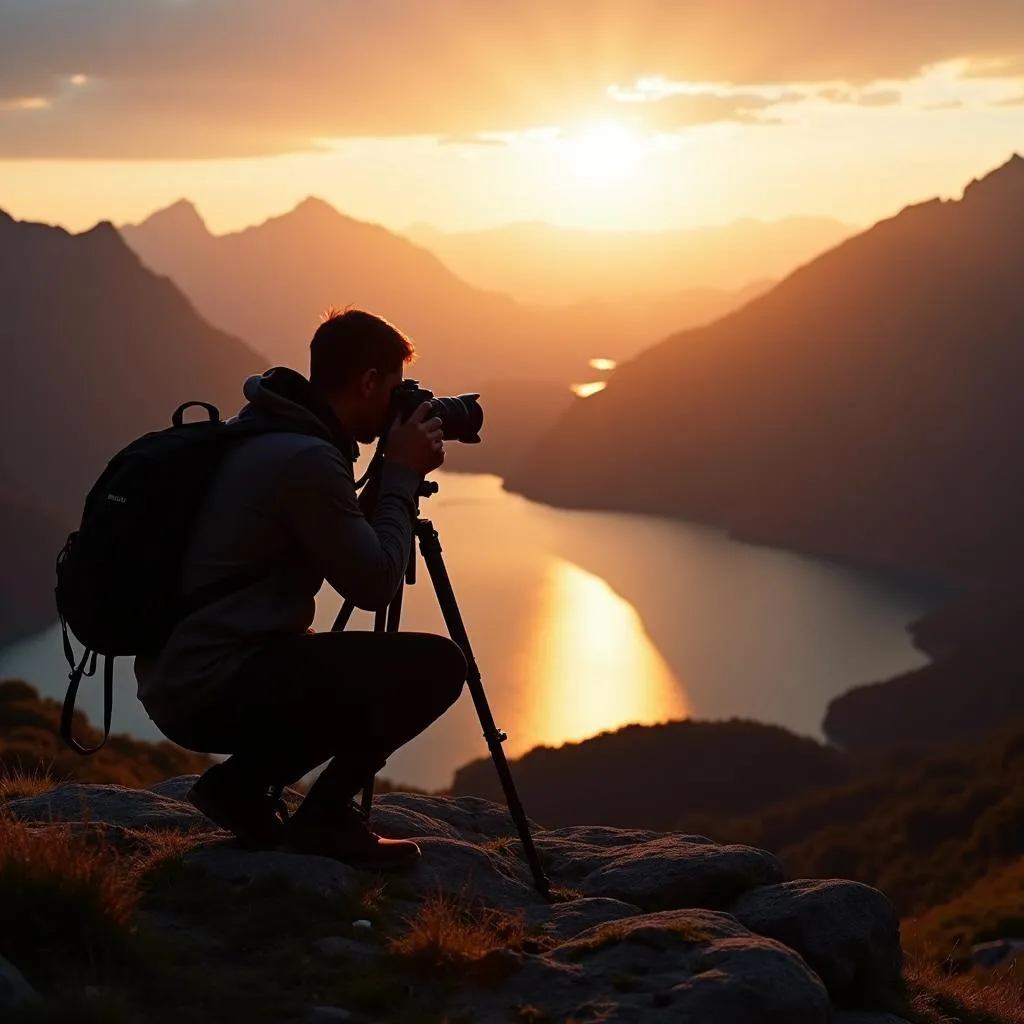“A journey of a thousand miles begins with a single step…” and often, the most breathtaking moments are captured with the click of a camera. As passionate travelers ourselves, we at TRAVELCAR.edu.vn understand the desire to immortalize those unforgettable experiences. But with a myriad of options flooding the market, choosing the right camera for your travel escapades can be daunting.
This comprehensive guide is here to help you navigate the wonderful world of travel cameras, ensuring you return home with stunning visuals to share your stories for years to come.
Understanding Your Needs: More Than Just Megapixels
Before diving into the technical jargon, let’s consider what kind of traveler you are. Are you an intrepid adventurer scaling the majestic peaks of the Himalayas, a culture vulture exploring the vibrant streets of Hanoi, or a beach bum basking under the tropical sun of Phu Quoc Island?
Your photography style and travel habits play a crucial role in determining the ideal camera. Ask yourself these questions:
- What kind of subjects do I enjoy photographing? Landscapes, portraits, wildlife, or action shots?
- How important is image quality to me? Do I need high-resolution images for large prints or sharing online?
- How much gear am I willing to carry? Am I a light packer or do I prefer having all the equipment I might need?
- What’s my budget? Defining a price range helps narrow down your options.
Types of Cameras for Travel Photography
Each type of camera comes with its own set of advantages and disadvantages. Let’s explore the most popular choices for travel:
1. Smartphones: The Pocket Powerhouses
Smartphones have revolutionized travel photography with their incredible convenience and increasingly impressive camera technology.
Pros:
- Portability: Easily slips into your pocket, making it perfect for spontaneous shots.
- Versatility: From panoramic landscapes to detailed macro shots, many smartphones offer multiple lens options and shooting modes.
- Connectivity: Instantly share your travel tales on social media or back up your precious photos to the cloud.
Cons:
- Limited image quality in low light: Struggles to capture the magic of a starry night or dimly lit temples.
- Lack of creative control: Fewer manual settings for advanced photographers.
- Battery life: Heavy usage can drain your phone battery quickly, leaving you stranded without a communication lifeline.
Ideal for: Casual photographers, budget-conscious travelers, and those who prioritize convenience.
2. Point-and-Shoot Cameras: Compact Companions
Point-and-shoot cameras bridge the gap between smartphones and larger cameras, offering a blend of portability and improved image quality.
Pros:
- User-friendly: Simple controls and automatic modes make it easy to capture great shots.
- Zoom capabilities: Get closer to the action with impressive optical zoom ranges.
- Affordable: Excellent value for the quality and features they offer.
Cons:
- Limited creative control: May lack the manual settings desired by experienced photographers.
- Image quality not as high as DSLRs or mirrorless cameras: While better than smartphones, they might not satisfy professionals or serious enthusiasts.
Ideal for: Travelers who want a dedicated camera without the bulk and complexity of larger systems, prioritizing ease of use and decent image quality.
 Essential travel photography equipment laid out on a table
Essential travel photography equipment laid out on a table
3. Mirrorless Cameras: The Perfect Balance
Mirrorless cameras have taken the photography world by storm, offering exceptional image quality and versatility in a compact package.
Pros:
- Superb Image Quality: Large sensors and advanced processors deliver stunning details and vibrant colors.
- Interchangeable Lenses: Adapt to any shooting scenario, from wide-angle landscapes to telephoto wildlife shots.
- Lightweight and Compact: More portable than DSLRs, making them ideal for travel.
Cons:
- Battery life can be a concern: Bring spare batteries, especially if you’re shooting video or using power-hungry features.
- Can be expensive: High-end models with multiple lenses can strain your budget.
Ideal for: Travelers who demand exceptional image quality, versatility, and portability, willing to invest in a system that offers room to grow.
4. DSLRs: The Powerhouses
DSLRs have long been the gold standard for professional photographers, renowned for their exceptional image quality, unmatched versatility, and extensive lens options.
Pros:
- Unmatched Image Quality: Large sensors and powerful processors capture incredible detail and clarity.
- Extensive Lens Selection: Choose from a vast ecosystem of lenses to suit every photography style and situation.
- Fast Autofocus and Shooting Speeds: Capture fleeting moments and action shots with precision.
Cons:
- Bulky and heavy: Can be cumbersome to carry around all day, especially with multiple lenses.
- Steep learning curve: Mastering all the manual controls and settings takes time and practice.
Ideal for: Serious photographers who prioritize image quality and creative control above all else.
 A photographer capturing the serene beauty of a mountain landscape during golden hour
A photographer capturing the serene beauty of a mountain landscape during golden hour
Essential Features for Travel Cameras
1. Image Stabilization: Reduces blur caused by camera shake, crucial for low light and telephoto photography.
2. Weather Sealing: Protects your investment from dust, rain, and accidental splashes.
3. Wi-Fi and GPS: Share photos instantly or geotag your adventures for future reference.
4. Articulating Screen: Compose shots from unique angles, perfect for selfies or low-angle perspectives.
Tips for Capturing Stunning Travel Photos
- The Rule of Thirds: Divide your frame into nine equal sections and place points of interest along these lines or intersections for a more balanced composition.
- Leading Lines: Use natural lines like roads, rivers, or fences to draw the viewer’s eye into the scene.
- Golden Hour Lighting: Shoot during the hour after sunrise and before sunset for warm, magical light.
- Tell a Story: Capture the essence of your journey through a series of photos that evoke emotions and memories.

